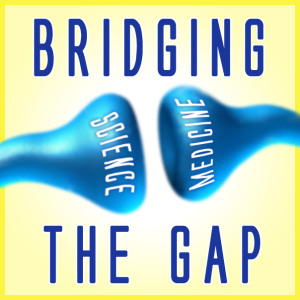 During the respiration unit of my undergraduate anatomy class, one of my students asked about differences in lung volume, and the effects of “being a runner” versus someone who does not exercise as regularly. While it is widely accepted that regular exercise can improve inspiratory capacity, the diverse impact of exercise on hormone levels and neurogenesis is not discussed as frequently. Exercise science is currently being heavily researched, and an understanding of recent findings can greatly impact a physician’s ability to provide individualized patient care.
During the respiration unit of my undergraduate anatomy class, one of my students asked about differences in lung volume, and the effects of “being a runner” versus someone who does not exercise as regularly. While it is widely accepted that regular exercise can improve inspiratory capacity, the diverse impact of exercise on hormone levels and neurogenesis is not discussed as frequently. Exercise science is currently being heavily researched, and an understanding of recent findings can greatly impact a physician’s ability to provide individualized patient care.
One of the most popular areas of research regarding the impact of exercise on the body is its effect on the hypothalamic-pituitary-adrenal (HPA) axis. The HPA axis is a previously established circuit regulating the release of glucocorticoids, including cortisol, by the adrenal glands in order to produce downstream effects, often associated with stress, in the body. In the context of exercise science, it has been found that cortisol concentrations in both the serum and saliva increase after high-intensity exercise. This is particularly interesting in the context of the neurobiology of depression. Along the midline of the midbrain, in the dorsal raphe nucleus where serotonergic neurons primarily originate, there exist glucocorticoid receptors whose activation affects mood and anxiety. It has been found that deletion of the glucocorticoid receptor from the dorsal raphe nucleus reduces anxiety-like behavior in mice, indicating a possible relationship between exercise, cortisol levels and mood.
It has recently been found that exercise can improve human cognitive performance, and one of the mechanisms by which this is believed to be mediated is hippocampal neurogenesis. The hippocampus is a component of the limbic system of the brain that is important for long-term memory, and is a region that has previously been implicated with postnatal neurogenesis. Studies that compare the hippocampal neurogenesis associated with different diets or with exercise alone produce different results—indicating that the effect of exercise on the brain is not necessarily a function of caloric intake or nutritional value. Specifically, a study has found that exercise-induced hippocampal neurogenesis is required for the benefits of exercise on spatial memory. Thus, altering diet alone may not produce the cognitive effects that are unique to exercise.
Varying the intensity of exercise can modulate its specific effect on the immune system as measured by the cytokine profiles in the serum of rats. Specifically, a group in Iran has found that in rats that were over-trained, the levels of IL-10 and IL-4, all multimodal in their actions but predominantly anti-inflammatory, were higher than in moderately trained rats. Authors extrapolate from this result the possibility that immune suppression can be a consequence of over-training exercise. However, in the moderately trained rats, it was found that there was a potential decrease in viral infection susceptibility as determined by a shift in the cytokine profile towards T-helper cell 1 (Th1) associated cytokines. Although there needs to be increased research to support these conclusions, this group has provided some evidence that a moderate level of exercise may be more beneficial to the immune system than very high intensity exercise.
While affecting mood, improving cognition, and influencing the immune system, it is evident that exercise has distinct effects on multiple systems of the mammalian body. And while physicians often address exercise in the context of obesity and physical therapy in the clinic, prescribing exercise to improve other areas of health is still considered to be more of an integrative medicine approach, rather than one commonly used by physicians trained in traditional western medicine. Research is currently being done to use exercise as an effective mode of intervention to disease, such as Parkinson’s, and perhaps exercise-related approaches will someday be more frequently employed in modern medicine.
Bridging the Gap focuses on the relationship between basic research and medicine to develop an appreciation for the science that underlies the foundations of modern medicine.



